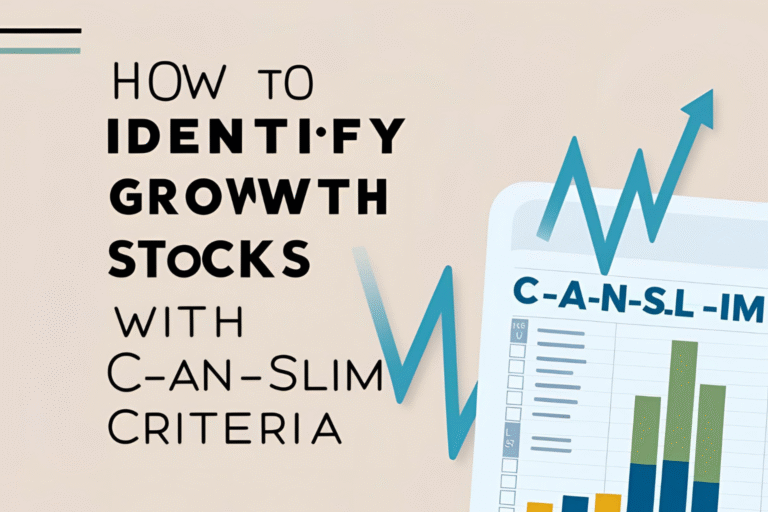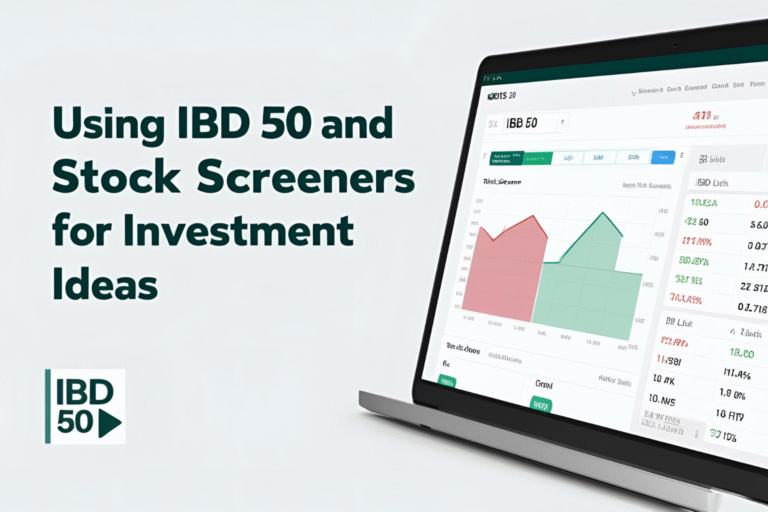CAN SLIM vs Value Investing: Which One Fits You Best?
Choosing the right investment strategy is crucial to achieving consistent long-term success. Two of the most well-known approaches are CAN SLIM, used by growth investors, and value investing, popularized by Warren Buffett.
In this guide, we’ll break down the major differences between these two investing philosophies, so you can decide which approach best matches your goals, personality, and risk tolerance.
What Is CAN SLIM?
CAN SLIM is a growth stock investing strategy created by William J. O’Neil, founder of Investor’s Business Daily (IBD). It focuses on companies with:
- Explosive earnings growth
- New products or innovations
- Strong price momentum and institutional demand
- Favorable market conditions
This method emphasizes buying stocks during confirmed market uptrends and selling with strict rules to protect capital and lock in profits.
Learn the full CAN SLIM breakdown here:
➡️ What is the CAN SLIM Investing Strategy?
What Is Value Investing?
Value investing is about finding undervalued stocks trading below their intrinsic worth. Value investors typically look for:
- Low price-to-earnings (P/E) ratios
- Stable cash flow and dividends
- Discounted valuations due to market overreactions
- Long-term business fundamentals
The goal is to buy low and hold patiently until the market recognizes the company’s true value.
CAN SLIM vs Value Investing: Key Differences
| Factor | CAN SLIM | Value Investing |
|---|---|---|
| Focus | Growth & momentum | Undervaluation & fundamentals |
| Holding Period | Short to medium-term | Long-term (years) |
| Stock Criteria | High EPS growth, RS ratings, new products | Low P/E, stable financials, low debt |
| Buy Signals | Breakouts in confirmed uptrends | Low valuation relative to intrinsic value |
| Sell Discipline | 7–8% stop loss, 20–25% profit rule | Often hold through volatility |
| Risk Profile | Higher volatility, higher reward | Lower volatility, slower returns |
Which Strategy Is Right for You?
Here’s how to decide:
- Choose CAN SLIM if you are:
- Comfortable acting quickly on technical setups.
- Willing to cut losses fast.
- Interested in high-potential growth stocks.
- Actively managing your portfolio.
➡️ 7 Golden Rules from IBD for Successful Investing
- Choose Value Investing if you are:
- More patient and long-term focused.
- Interested in company fundamentals and discounted valuations.
- Prefer less frequent trading and are okay with slower gains.
Both strategies can work—what matters most is consistency and discipline.
Can You Combine Both?
Yes, some investors mix elements of both. For example, a stock with strong fundamentals (value) and accelerating earnings (growth) can be ideal.
But combining them requires clarity: don’t confuse strategies or chase conflicting signals.
To follow a structured growth method:
➡️ How to Identify Growth Stocks with CAN SLIM Criteria
Final Thoughts
CAN SLIM vs value investing isn’t about which is better—it’s about which suits your personality, time commitment, and financial goals. If you’re seeking rapid growth and are comfortable with active management, CAN SLIM may be ideal. If you prefer steady, long-term compounding, value investing could be your path.
Whichever strategy you choose, stick to its core rules—and success will follow.
FAQs
What is the main difference between CAN SLIM and value investing?
CAN SLIM targets fast-growing stocks with momentum, while value investing focuses on undervalued stocks with strong fundamentals.
Is CAN SLIM more risky than value investing?
Yes, it generally involves higher volatility and more active management, but also offers higher reward potential.
Can a beginner use the CAN SLIM method?
Yes, but it requires discipline and education. Start by learning CAN SLIM’s core rules and strategies.
Does Warren Buffett use CAN SLIM?
No, Buffett is a value investor. CAN SLIM was developed by William O’Neil and focuses on growth stocks.
Can I mix both strategies in my portfolio?
Yes, but be cautious. Mixing methods requires clarity and consistent rules to avoid conflicting decisions.






